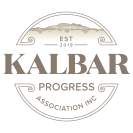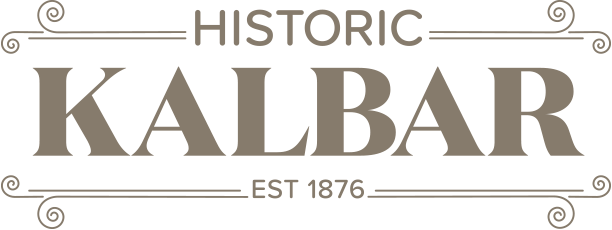
Born with another name

This remarkable town has a rich tapestry of history quite unlike any of the early settlements in the Scenic Rim. The original inhabitants that came to settle in the area were predominately of German descent. In this little town there were not just the Smiths, Browns or Jones, but household names like Weinholts, Krauses and Dieckmanns. These pioneering German families invested their future in an area that was so far away from their original European birthplace.

In the mid 1800’s, the diverse countryside around this town, was originally part of the ‘Fassifern Sheep Run’, later called, the ‘Fassifern Pastoral Run’. In 1868, the area was opened up for farm selections in order to establish farming, education and housing for hard-working pioneers.

In 1876-77, a local pioneer, ‘August Engels’ began trading in the town from his home in Edward Street, and it is believed that a few years later, the little township was named ‘Englesburg’, after him.
Unfortunately, the town underwent a name change from ‘Engelsburg’ to ‘Kalbar’ in 1916 during the war, because of the German origin of its founder.
As the small town grew , another enterprising local, ‘Lionel Ainger Wiss’ together with his brothers- Alfred and Campbell, opened the ‘Wiss store’ in George Street.
With so much patronage and demand, the little store was replaced with the much anticipated ‘Wiss Emporium’. on March 25th 1910. It was filled with a spectacular arrange of items from bottles to boiled lollies, farm produce, food staples, clothing and even pianos!
Today, the elaborate building still stands proud and continues to delight locals and tourists alike with a feast of fabulous shopping treasures.
In 1879 the name – ‘Engelsburg’ was chosen for the then thriving settlement. Unfortunately the town’s name was short lived. 40 years on, during World War 1, anti-German sentiment had grown around the area.
In 1916 the Government ordered the town be renamed with a local Aboriginal word – ‘Kalbar’.
The meaning of this indigenous word has been the subject of much conjecture, but in the end, it was accepted that the meaning was ‘bright’ or ‘star’.

“Today, Kalbar is known as the ‘Star of the Fassifern Valley’. And here it shines brightly, in the Scenic Rim”.
“Today, Kalbar
is known as the
‘Star of the Fassifern Valley’. And here it shines brightly,
in the Scenic Rim”.
Historic sites

Come meet some of our oldest locals
Today, much of the historical architectural interest of the town is in Edward and George Streets.
Unfortunately, a disastrous fire in February 1920 rasied most of the buildings in Edward Street, including the original School of Arts hall. The Bickerton’s building which sits on the corner of Edward and George Streets is the only building on that side of the road to have survived the fire.
1.Pioneer Graves – Muller Road (not shown on map).
2.Stark House – C. 1908. Built by Albert Stark which originally had 11 rooms and was built for the cost of 800 pounds. Not open to public viewing.
3.Wiss Cottage – C. 1890 – Restored and still a private home.
4.Wiss Emporium – C. 1909. The Wiss Brothers were general merchants who had been in business in the area since 1890.
5.Bickerton’s building – C. 1908. General merchants who competed for almost 40 years with the Wiss Brothers. Both bought produce from the local farmers often with a ‘Dutch’ auction where the farmers bargained for the best price from their wagon in the middle of the street.
6.School of Arts Hall –the original building was further along Edward Street. It opened in 1906 and was destroyed in the fire of 1920. Present building was opened in August 1922.
7.Wiss House – C. 1912. Restored and now a B&B. Not open to public viewing.
8.Engelsburg Memorial Park. Original site of the Engelsburg State School from 1885-1954. A sandstone memorial sculpture with each face depicting one of the armed services.
9.St. John’s Lutheran Church. Original church on the site opened 28th October 1885. It wasn’t until 1908 the first bell tower was erected. Current church and bell tower built in 1930.
10.White Chapel Kalbar – (originally Uniting Church) – C.1882 . Originally built in Dugandan, it was moved to Boonah and then to ‘Engelsburg’ (Kalbar) where it re-opened for service on 5th July 1908.
11.Herrmann House – C. 1880. Was originally two of Kalbar’s oldest houses. The back section was originally built on the land by Franz and Jacob Surawski. The front section was built around the same time approx. 1.1 klms up the road from Kalbar. It was moved back to town and restored in 2019.
12.Engelsburg State School – C. 1885. The original state school was moved to its present site in George Street in 1955. It was a single building and is now the western section of the present Kalbar School complex.
13.Assembly of God (St.Boniface’s Roman Catholic Church) – C. 1887. The original church was built near the Catholic Cemetery in George street and opened on 9th September 1887. However, It was dismantled and rebuilt in a new style where it now stands today.
14.Kalbar Post Office – C. 1897. This building was the first Post and Telegraph Station at Fassifern Reserve. Mail was brought once a week from Ipswich on horseback.
15.The Royal Hotel – C. 1900. Is one of the two original Kalbar hotels and was originally owned by Hans and Matilda Nielsen.
16.Krause’s Shop – C. 1920. This shop owned by William and Ann Krause and was erected after the Great Fire on 16th Feb. 1920.
17.Police Station and Cells – C. 1899.
18.St. John’s Lutheran Cemetery
19.St. Mark’s Lutheran Cemetery
20.Engelsburg Baptist Cemetery
21.Catholic Cemetery – 3 acres for this cemetery was where the original St. Boniface’s Catholic church stood.
22.Kalbar General Cemetery – C. 1921.
23.Methodist Cemetery (Original Methodist Cemetery) – C. 1893.




